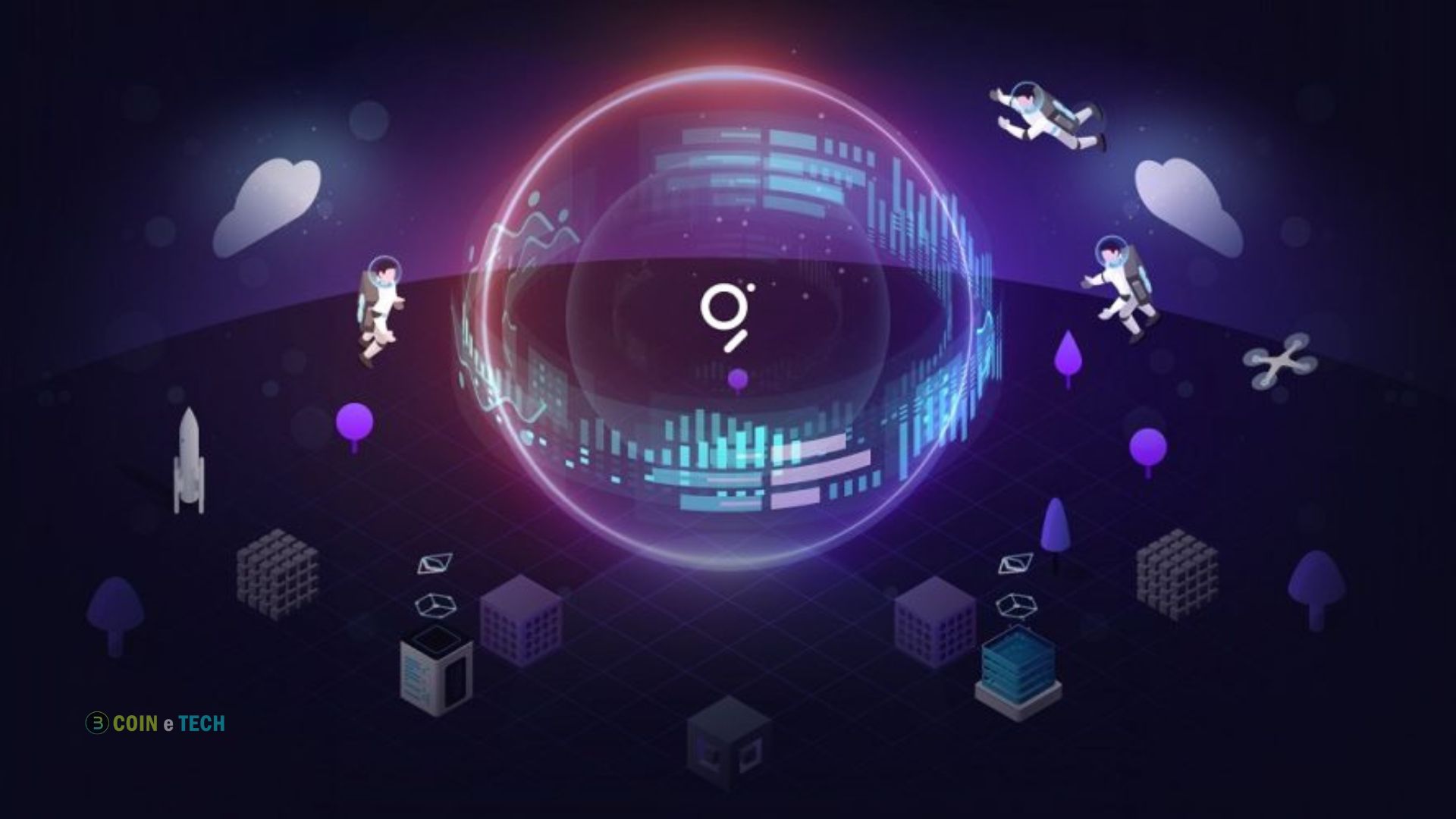The blockchain industry is still growing very quickly. New projects are starting every day, new uses are being found, and new ways to improve the decentralized environment are being built. In the middle of all of this, one of the most important parts of blockchain is scanning and accessing blockchain data quickly and correctly. This is where The Graph (GRT) comes in. It gives us a decentralized way to organize and search data from blockchains, mostly Ethereum and other decentralized apps (dApps).
Since its first release, The Graph has changed how data is viewed in blockchain networks, making it possible for decentralized apps to work without problems. In this piece, we will discuss the latest news about The Graph, its new features, and how it is affecting the blockchain and decentralized finance (DeFi) ecosystems as a whole.
What Is The Graph?
Before getting into the latest news, let’s take a quick look at The Graph and its place in the blockchain ecosystem. The Graph is a decentralized, open-source system that can be used to search and index data from blockchain networks. Simply put, it makes it very easy for decentralized apps (dApps) to get blockchain data. Before The Graph, it was hard for developers to get data from blockchains and organize it, which slowed down the creation of dApps.
Developers can use The Graph to make and share open APIs, or subgraphs, that let anyone query the data saved on blockchains. The protocol’s ability to organize blockchain data allows decentralized applications (dApps) like DEXs, loan platforms, and NFTs to work well. Because of this, the Graph has become an important piece of infrastructure in the world of DeFi. The Graph’s original token, GRT, runs the network. Indexers, Curators, and Delegates are all part of the program, and they utilize it to reward each other for their contributions. Indexers process queries, Curators identify relevant subgraphs, and delegate GRT to Indexers.
Expansion to New Blockchains
At first, the Graph became famous because it could index data from Ethereum, the biggest smart contracts platform. It has recently been added to other blockchains, which is a big step toward making it the standard system for indexing data. In 2023, The Graph added support for more than one layer-1 and layer-2 blockchain to its services. Some of these are:

- Binance Smart Chain (BSC)
- Polygon
- Arbitrum
- Optimism
- Avalanche
- Fantom
With this expansion, developers working on these chains can now index their data using The Graph’s protocol. This lets them concentrate on developing new ideas instead of handling complicated data-gathering methods. This change makes The Graph a multi-chain tracking solution, which is very important as the blockchain space moves toward making it easier for different ecosystems to work together.
The Graph Network Migration
Moving to the independent mainnet in 2021 was one of the most important steps for The Graph. A lot of different people have been able to join The Graph as Indexers, Curators, and Delegators since then because it is now distributed more. The protocol took another big step forward in 2023 when it finished moving to the Arbitrum layer-2 scaling solution.
This was done to cut down on gas fees and make the protocol run more efficiently overall. The Graph now has lower transaction fees for GRT holders because it uses Arbitrum, making it more appealing to a wider range of users. The network should become even more decentralized and stronger as more dApps and coders use the graph in layer-2 solutions. This is a very important development because scale and efficiency are still big problems for blockchain technology, especially when demand is high, like during bull markets.
Partnerships and Ecosystem Growth
The graph’s environment has grown quickly, another important trend. The Graph has teamed up with several well-known blockchain projects and decentralized apps, making it even more integrated into Web3’s core infrastructure. Here are some well-known partnerships and integrations:
- Uniswap: One of the largest decentralized exchanges relies on The Graph for efficient data querying.
- Synthetix: A DeFi protocol that uses The Graph for its synthetic asset issuance platform.
- Aave: A leading DeFi lending platform that uses The Graph to query data across its decentralized liquidity pools.
- Balancer: A popular decentralized asset management platform that leverages The Graph for data needs.
As these agreements show, the graph is very important for ensuring that DeFi and other dApps work well. These major partnerships bolster The Graph’s position as the data infrastructure backbone for Web3 applications.
Tokenomics and Staking Updates
Another thing about The Graph that keeps people interested in the crypto space is its tokenomics. Given that GRT is the network’s original token, Indexers, Curators, and Delegations stake it to participate in the protocol. As the protocol has grown, so has the desire for GRT staking. This has led to new developments meant to improve the staking process.
Late in 2023 and early in 2024, The Graph released changes that would improve staking, make it easier for Delegations to join, and give Indexers better reasons to do so. These changes should encourage more people to join the network, raising demand for GRT and keeping it decentralized and safe. There has also been ongoing talk in the community about adding more decentralized governance mechanisms so that people who own GRT can have a bigger say in how the protocol develops in the future.
Focus on Decentralization and Open APIs
Information should not be stored in a single location; this is another key principle of The Graph. When developers enable open APIs (subgraphs), they no longer need to rely on centralized services to access and query blockchain data. In keeping with the guiding principles of the blockchain community, this transparency guarantees that decentralized applications (dApps) are open and immune to censorship.
In 2024, The Graph Foundation again showed its dedication to independence by announcing new programs to help developers create open APIs and decentralized apps. These projects include hackathons, grants for subgraph developers, and partnerships with university institutions to look for new ways to index data without a central server. As the blockchain industry grows, more dApps and blockchain projects will need open-source, decentralized technology that can keep up. This focus on decentralization is very important.
The Future of The Graph
Data indexing systems that are both effective and extensible are in high demand due to the expanding blockchain field. The Graph has become an important part of the blockchain ecosystem’s infrastructure, and its ongoing growth shows that people want to explore data without a central server. A look ahead shows many trends that could affect how The Graph grows in the years to come:

- Further Blockchain Integrations: As more blockchains gain popularity, The Graph will likely continue expanding its indexing services to other networks. This would make it even more versatile and integral to the multi-chain future of blockchain.
- Web3 Growth: As the Web3 space matures, The Graph’s role in providing accessible data to dApps will become even more critical. Whether it’s in the DeFi sector, NFTs, or other decentralized applications, The Graph’s indexing capabilities will be essential for scaling these solutions.
- Decentralized Governance: The push towards decentralized governance will likely accelerate, allowing GRT holders and community members to have a greater say in the protocol’s future. This would further align The Graph with the core principles of blockchain and decentralization.
Also Read: LimeWire Crypto News: Cryptocurrency Revives a Digital Legend
In summary
The Graph is essential to the decentralized web and goes beyond being a simple protocol for indexing blockchain data. The proper operation of decentralized applications, especially in the DeFi sector, relies on their ability to facilitate rapid data retrieval. As the blockchain industry evolves, The Graph will continue to play a pivotal role thanks to its decentralization initiatives, increasing use across the Web3 domain, and support for additional blockchains.
The Graph is always evolving and improving, so anyone with a stake in it or a project built on it needs to keep up with the latest news and advancements. If you’re a developer looking for a strong indexing solution or an investor interested in the decentralized data revolution, keep a watch on The Graph.








